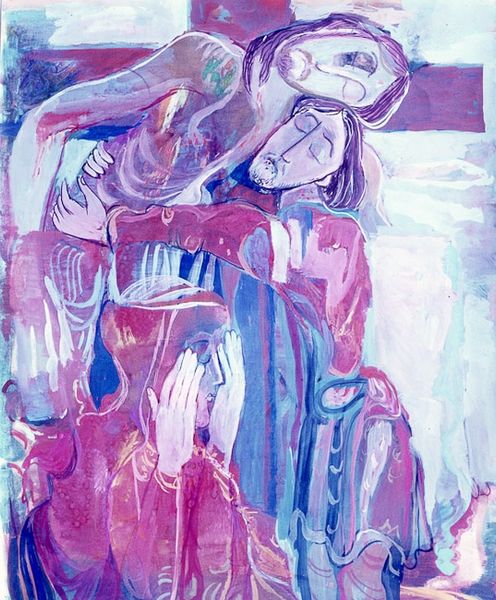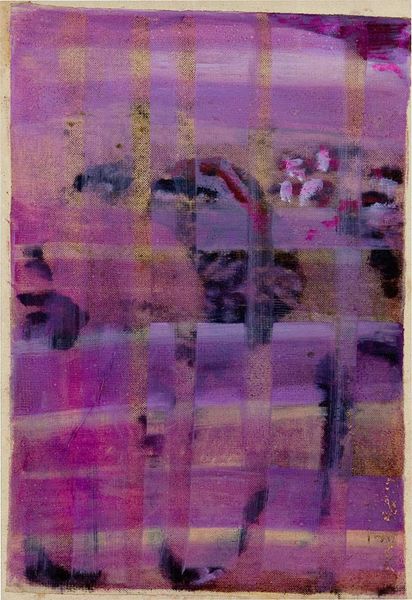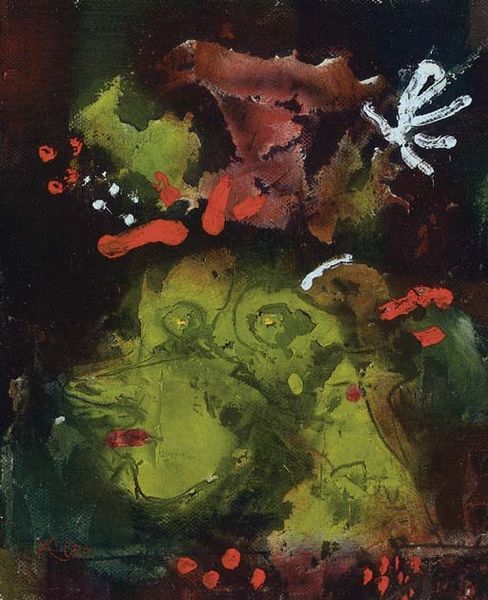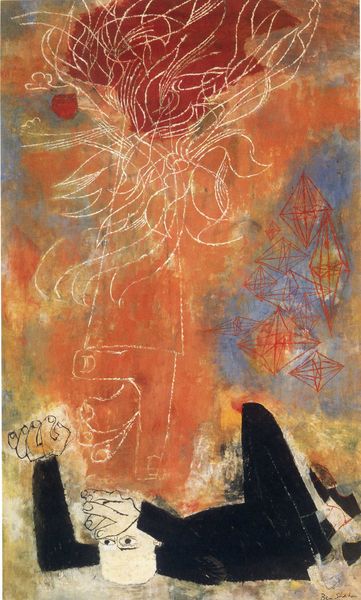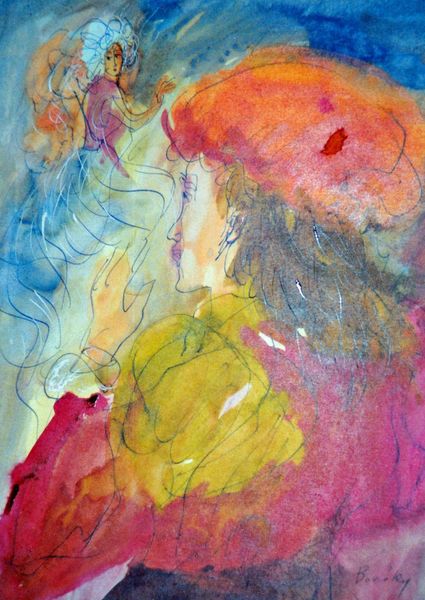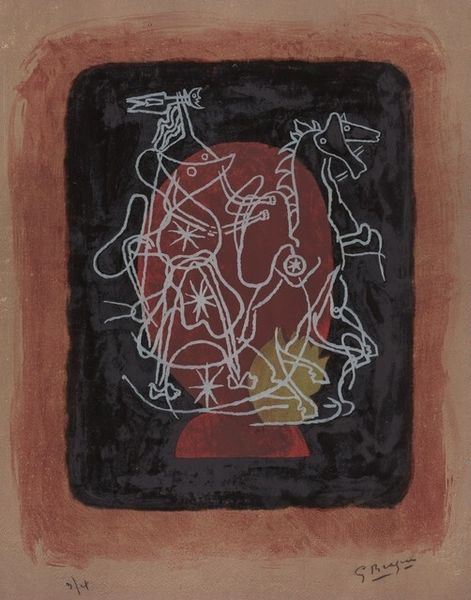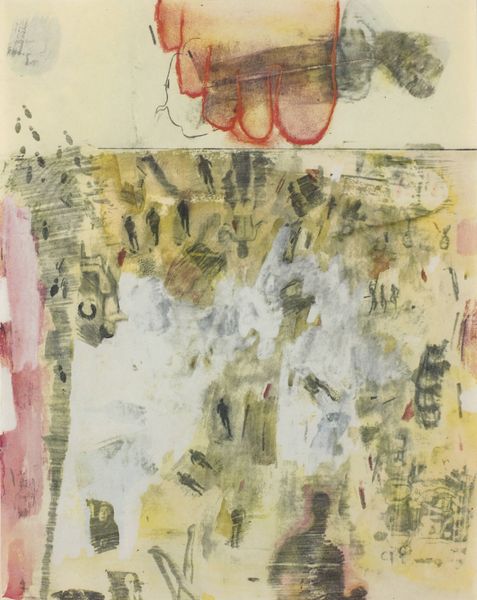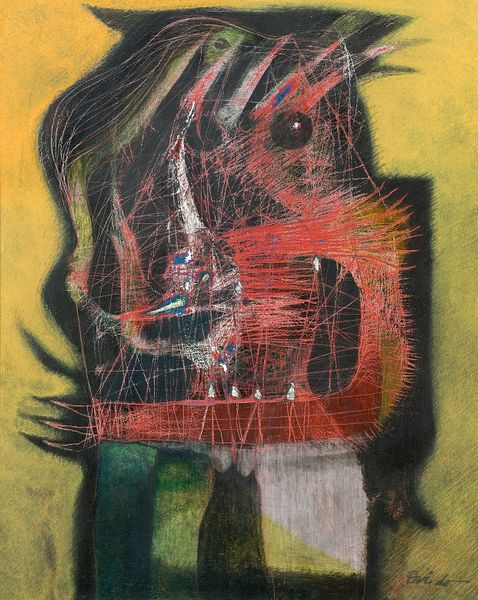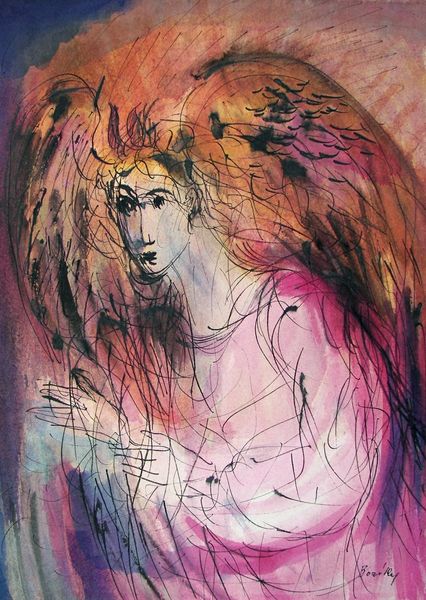
Dimensions: 36 x 28 cm
Copyright: Maria Bozoky,Fair Use
Curator: Good morning. We’re standing before Maria Bozoky’s "Claudel: Connaissance de l'Est," created in 1986 using ink and watercolor on paper. Editor: Well, my initial impression is one of unease, perhaps even a touch of gothic horror. The figures seem to emerge from a hazy, dreamlike background. It’s quite evocative, wouldn't you agree? Curator: Absolutely. Bozoky’s process here, mixing the fluidity of watercolor with the starkness of ink, creates that ethereal effect. You can really see the paper influencing the dispersion of pigments, which creates a wonderful interplay between control and chance. This reminds us that artwork is not solely dependent on intention, but equally material and tools influence the output, expanding the making process into multiple levels. Editor: And I find it intriguing how this medium supports the theme. Given the title's nod to Paul Claudel's experiences in the East, one has to wonder if Bozoky sought to visually convey the disorientation and strangeness Claudel might have encountered, using this particular combination of ink and watercolor to convey alienation and introspection? What would have inspired the use of this technique to make sense of such historical period and narrative? Curator: Interesting point. Looking at Bozoky's methodology— the deliberate layering of colors, the somewhat uncontrolled bleeds and washes, and finally, the expressive linear quality in its final stage with the ink work to achieve a final figure drawing – there's a palpable tension. The expressive linework contrasts with the ethereal washes, perhaps mirroring the artist's dialogue with figuration, and ultimately allowing Bozoky to deconstructs conventional methods of portraiture while building unique visuals, Editor: Exactly. Bozoky takes an approach to material, in both selection and the interaction during the making, while playing with figuration. I keep wondering what role the social climate and visual landscape from 1986 might have played in influencing the development of this method. Were there other artists experimenting with such bold blending of techniques? Curator: I think, in a sense, that this reveals a dialogue. Considering the period when it was created, perhaps this piece serves as Bozoky’s commentary of the status quo—a subtle act of challenging pre-established ideas while seeking their individual and authentic voice and methods in the craft. Editor: Indeed. So, here we have not just a portrait, but a multi-layered visual statement that compels us to reflect on artmaking process. Curator: Precisely. I will definitely keep in mind the power of material and production methods for revealing hidden aspects of the artistic expression. Editor: As will I consider this further in terms of visual language development and the socio-political framework that shape art.
Comments
No comments
Be the first to comment and join the conversation on the ultimate creative platform.


